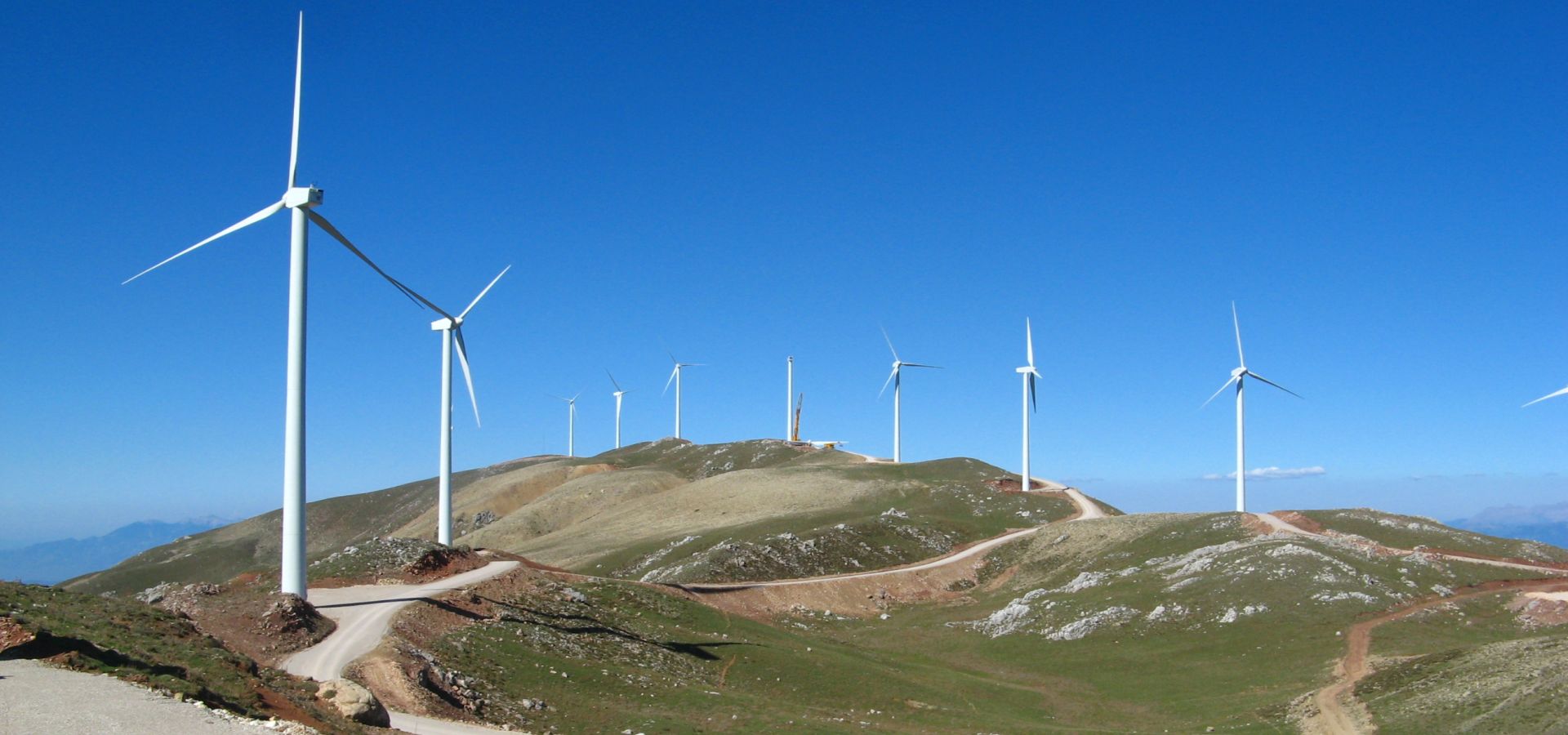The Greek renewable energy transition has its origin in the 1990s when the country first introduced a feed-in tariff. The road since then has been a bumpy one, yet Greece’s government issued a draft proposal whereby the country is to reach a 40 percent renewable electricity target by 2020. If this proposal is adopted, Greece will have to considerably speed up its build-up of renewables, as Marilena Zidianaki explains.

A wind farm in the Panachaiko mountain range in Greece. (Photo by Koliri, modified, CC BY-SA 3.0)
The Greek support scheme for renewables was launched in the mid-1990s as an incentive for independent power production and investments in renewable energy projects. A purchase obligation on the network operator was introduced, along with regulated feed-in tariffs (FiTs) for the purchase of renewable energy. Additional incentives were offered in the form of subsidies (eg. for leasing equipment) and income tax exemptions. In parallel, the licensing procedure for RES projects was simplified in 2010, leading to more and more investments in RES projects.
Especially in the photovoltaic (PV) sector there was an expansion of capacity to 2.6 GW between 2010 and 2013. This ‘solar boom’ entailed a significant deficit in the Special Account for Renewables from which RES producers are paid for their output. This Account is largely funded by final consumers through their electricity bills and managed by LAGIE, the Electricity Market Operator, for purchasing renewable energy under Power Purchase Agreements (PPAs). The government and the Regulatory Authority for Energy (RAE) took a series of measures between 2012 and 2014 to restore liquidity in this special account without visible success. In order to tackle the increasing deficit, a new approach was required.
As a consequence, the ‘New Deal’ for renewables was implemented in April 2014 (Law 4254/2014), repealing the special solidarity levy for all RES producers. While the ‘New Deal’ successfully brought in a deficit reduction from 213.92 million euro in May 2014 to 209.44 million euro in June 2014, PV investors representing a considerable percentage of installed power capacity took legal action against it. At the same time, LAGIE, the Electricity Market Operator, resorted to legal action against ADMIE, the Independent Power Transmission Operator (IPTO), requesting overdue payments which had contributed to the creation of the deficit.
Due to the financial turmoil and the threat of exit from the euro-zone in summer 2015, investment initiatives were postponed and at least four major RES projects in Greece stalled. While RES investments seemed to be at a dead-end, a positive step towards promoting renewable energy and simultaneously alleviating Greek households from their energy poverty was made with the ‘Solarize Greece’ campaign, initiated by Greenpeace Greece in summer 2015. Greenpeace Greece raised some thousand euros through an international crowdfunding campaign, which were then used for the installation of photovoltaics up to 2 kW in the households of low-income families in the island of Rhodes.
Overall, the non-interconnected Greek islands reached 23% electricity production by RES in November 2015, according to a report by DEDDIE, the Hellenic Electricity Distribution Network Operator. This came as a positive outcome after the action taken by the State to help them overcome their energy challenge and grid interconnection. Among the efforts, ADMIE has signed contracts with Greek and international companies to connect certain Greek islands with Greece’s mainland grid using underground and subsea cabling, with the aid of funds from the EU’s National Strategic Reference Framework and the European Investment Bank.
The subsequent adoption of the ‘Net-metering’ ministerial decision brought sparking hope for self-consumption of solar energy with rooftop and ground-mounted PV systems. Among other provisions, the decision also allows governmental and non-governmental not-for-profit organizations (e.g. hospitals and universities) to install up to 500 kWp of PV capacity, in order to cover their electricity needs. This will essentially make these organisations self-reliant and autonomous in their energy production and consumption cutting down significant expenses.
After the ‘Net-metering’ decision, the Greek Government also opened consultations in early 2016 on the draft proposal for a new national support scheme, aimed at achieving the 40% renewable electricity target by 2020. If the proposal is adopted, Greece will need to considerably speed up RES investments and production, installing in four years at least half of the capacity installed in the previous two decades. In order to achieve this, licensing procedures could be simplified without compromising the safety of the project for both the environment and humans.
While increasing its RES production by setting the aforementioned targets, Greece has to also guarantee greater stability of its regulatory framework for current and prospective RES investors. Legal risk is now high since the applicable FiTs are linked to the law, rather than to a contract, and are open to governmental intervention through legislative procedures. Additionally, focus on RES production should be coupled with more ambitious energy efficiency efforts, such as the already established ‘Building the Future’ programme, and more R&D initiatives. Taking stock of and efficiently using its natural energy supplies, Greece should aim at achieving energy security through RES production only, completely phasing out lignite within the next decade.
[…] The Greek renewable energy transition has its origin in the 1990s when the country first introduced a feed-in tariff. Read more… […]